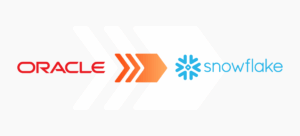If AI hasn’t blown our minds yet, Snowflake Summit 2025 made it clear what’s coming soon will. I flew into San Francisco expecting some solid updates and left feeling like I’d seen the blueprint for the next era of enterprise AI. The conference radiated with ambition, energy and the promise of “breathtaking” models that unlock previously unimaginable possibilities within the next two years.
From Sam Altman’s thought-provoking keynote to hands-on dev labs and a few fun surprises in between (robot dog, anyone?), the experience was just too good not to share. So, here are my reflections on the most exciting announcements, themes and conversations from Snowflake Summit, from the main stage to the booth floor.
Monday: AI acceleration and Altman’s bold vision
Sam Altman and Snowflake CEO Sridhar Ramaswamy kicked off the week with a keynote that did not disappoint. When asked what he’d do with 1,000x more compute, Altman grinned and said, “I’d ask AI to work super hard on building better AI models… and then ask that model what to do with all the compute.” A delightfully recursive answer that got the room buzzing!
But beyond the laughs, Altman’s insights into AI’s future were pure gold for enterprise leaders, including one major takeaway: Speed is everything in today’s AI landscape.
“The companies with the quickest iteration speed win.”
— Sam Altman, Snowflake Summit 2025
That hit home. Early adopters who experiment and iterate fast are outpacing those waiting for clarity. So, don’t sit on the sidelines. Start making bold bets now. Enterprises that are waiting around instead of building a solid foundation for AI will get left in the dust.
When it came to the AGI debate, Altman took a perspective I loved: If AI can quadruple our scientific discovery rate, isn’t that good enough? It’s not about labeling a system as AGI; it’s about what it can help us accomplish now.
He also emphasized how compute isn’t just horsepower but ROI. Enterprises using advanced models and more compute are already getting exponentially better results. That’s a power law we can’t ignore. It was also a call to action: Start putting AI to work on your hardest problems. Today’s models might surprise you.
Tuesday: AI platforms must be responsible by design
Tuesday’s keynote highlighted Snowflake’s data-native approach to AI, including in-place model execution, native governance and intelligent agent workflows. It was cool to see how we support Snowflake’s vision by providing context, governance and observability for complex environments.
While Snowflake focuses on building the AI-ready platform, we complement it with:
- Context and lineage across tools and clouds, tracking where data comes from, how it’s transformed and where it ends up, so you can trust what your models are learning.
- Policy enforcement from source to consumption, ensuring compliance and governance travel with your data, whether it lives in Snowflake or moves across other platforms.
- Cost observability to help manage compute sprawl, empowering you to see and control where your spend is going. Because as model usage grows, costs can spike quickly.
Overall, the message was clear: Responsible AI starts with responsible data.
Wednesday: Data strategy is the real differentiator
By midweek, the conversations shifted from features to strategy. From startups to Fortune 100s, the emphasis was on intentional data strategies rather than AI buzzwords.
The keynote mapped out the architecture of tomorrow’s enterprise, one where:
- AI models run in-place with your data
- Governance is a native layer, from lineage to RBAC for LLMs
- Unstructured data (PDFs, audio, images) is just as usable as structured data
- Business users aren’t just dashboard consumers but interact with intelligent agents across their workflows
It’s an exciting vision, and it doesn’t require hundreds of tools. It simply requires the right ecosystem. AI success comes from fewer, better-integrated tools, not a Frankenstein stack of dashboards and scripts. It’s all about a streamlined way to go from raw data to governed, AI-ready outcomes, without losing sight of compliance or cost.
Along those lines, our Snowflake integration was highlighted as a bridge to smarter, governed and cost-effective AI readiness. Because the future of AI isn’t just about models; it’s about making data AI-ready, responsibly, at scale and with trust built in. That’s where the real transformation lies.
Thursday: Community and canine curiosity
By Thursday, the energy on the expo floor was electric. You could feel it in the conversations. People weren’t there to collect swag. They were ready to build something real.
Nearly every chat at our booth touched on three priorities:
- Making AI responsible. Teams are eager to harness AI’s potential but are also aware of the risks. They’re looking for built-in governance, data quality controls and explainability.
- Making platforms connected and open. No one wants to be locked into a single vendor. People want plug-and-play ecosystems that work across clouds and with their existing tools.
- Future-proofing data strategies. Whether it’s supporting evolving regulatory needs or scaling with AI workloads, companies want solutions that will evolve and scale with their needs.
And yes, one of my favorite moments of the week was watching a dog stare down a robot pooch in the hallway. The look on the dog’s face was priceless, as if to say, “What is that thing?” Just a funny reminder that curiosity is universal, whether you’re a collie or a CTO. Sometimes, the best part of a tech summit isn’t the tech itself, but the sense of wonder that innovation inspires in us all.
Conclusion
As Snowflake Summit came to a close, one theme rang out across keynotes, booths and hallway conversations: Organizations aren’t just chasing AI; they’re trying to ground it in something solid. With AI moving from concept to production and pressures mounting around cost, complexity and speed, the call for clarity and control is louder than ever.
Beneath the excitement around AI was the recognition that it doesn’t operate in isolation. AI multiplies whatever foundation it’s built on, so if that foundation is fragmented, fragile or opaque, chaos and failure will follow.
That’s why I loved seeing governance and FinOps becoming native to the platforms teams already use. Not as afterthoughts, but as essential infrastructure, giving teams real-time insights into data flows, usage, policies and cost, without slowing them down.
Across conversations, it was clear that AI is woven into every stage of the data lifecycle. And that makes things like semantic consistency, cross-platform visibility and open architecture essential.
The organizations that thrive in this new era won’t be the ones chasing every shiny tool. They’ll be the ones treating data like infrastructure: carefully designed, actively maintained, governed and ready to scale.
Because in the end, AI is the amplifier. And what it amplifies depends entirely on its foundation. We’re proud to be building that foundation alongside Snowflake, and even more excited for what’s coming next.



